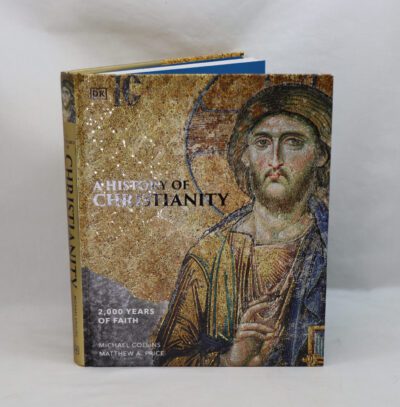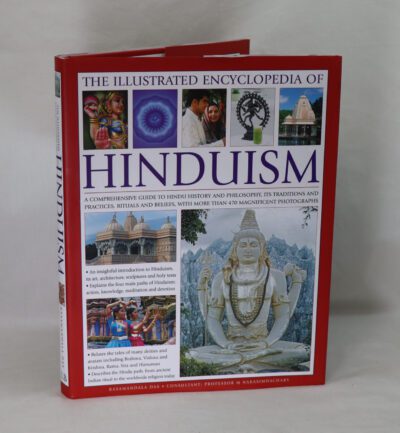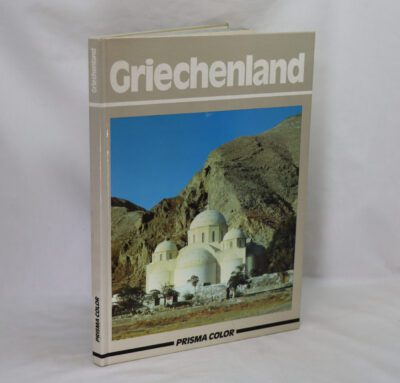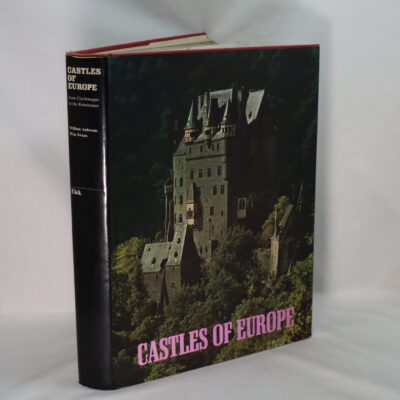The search for your perfect item starts here ...
Byzantine Painting.
By Andre Grabar
Printed: 1953
Publisher: Albert Skira. Lausanne
| Dimensions | 25 × 29 × 3 cm |
|---|---|
| Language |
Language: English
Size (cminches): 25 x 29 x 3
Condition: Very good (See explanation of ratings)
Your items
Item information
Description
In the original dust cover. Green cloth binding with gilt title on the spine and front board.
We provide an in-depth photographic presentation of this item to stimulate your feeling and touch. More traditional book descriptions are immediately available.
- Note: This book carries a £5.00 discount to those that subscribe to the F.B.A. mailing list
A quality first edition. Please view our extensive photographs. An art history work from Andre Grabar devoted to Byzantine mosaics and paintings, richly illustrated throughout with tipped-in coloured plates. The first US edition of this work.With the publisher’s original clipped dust wrapper.From the ‘Great Centuries of Painting’ series, art historian Andre Grabar offers a fully documented, brightly illustrated overview of Byzantine painting and mosaics.This volume contains critical studies of fifth and sixth century mosaics, mural paintings at Castelseprio, the mosaics of Venetia and Sicily and painting in books, among other areas.Grabar was one of the 20th-century founders of the study of art and icons of the Eastern Roman Empire.Collated, complete with all one hundred and five tipped-in reproductions present to the work, in vibrant colour. In the original cloth binding. Externally, excellent, with a little shelf wear.
Byzantine art comprises the body of artistic products of the Eastern Roman Empire, as well as the nations and states that inherited culturally from the empire. Though the empire itself emerged from the decline of western Rome and lasted until the Fall of Constantinople in 1453, the start date of the Byzantine period is rather clearer in art history than in political history, if still imprecise. Many Eastern Orthodox states in Eastern Europe, as well as to some degree the Islamic states of the eastern Mediterranean, preserved many aspects of the empire’s culture and art for centuries afterward.
A number of contemporary states with the Eastern Roman (Byzantine) Empire were culturally influenced by it without actually being part of it (the “Byzantine commonwealth”). These included Kievan Rus’, as well as some non-Orthodox states like the Republic of Venice, which separated from the Byzantine Empire in the 10th century, and the Kingdom of Sicily, which had close ties to the Byzantine Empire and had also been a Byzantine territory until the 10th century with a large Greek-speaking population persisting into the 12th century. Other states having a Byzantine artistic tradition, had oscillated throughout the Middle Ages between being part of the Byzantine Empire and having periods of independence, such as Serbia and Bulgaria. After the fall of the Byzantine capital of Constantinople in 1453, art produced by Eastern Orthodox Christians living in the Ottoman Empire was often called “post-Byzantine.” Certain artistic traditions that originated in the Byzantine Empire, particularly in regard to icon painting and church architecture, are maintained in Greece, Cyprus, Serbia, Bulgaria, Romania, Russia and other Eastern Orthodox countries to the present day.
Want to know more about this item?
















